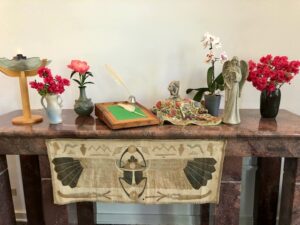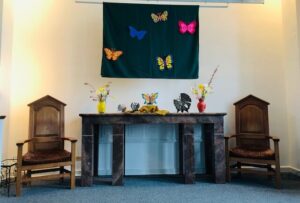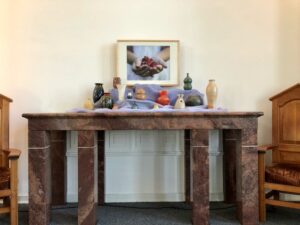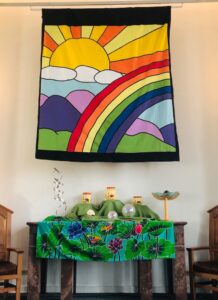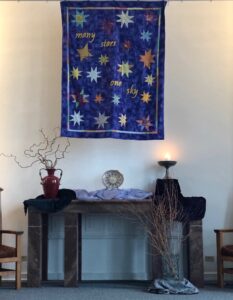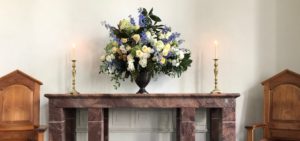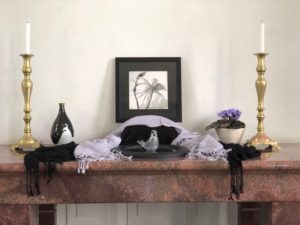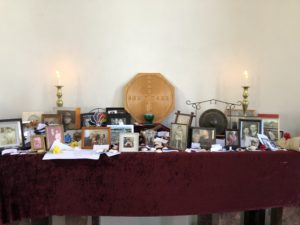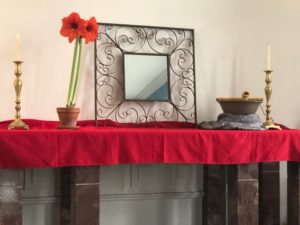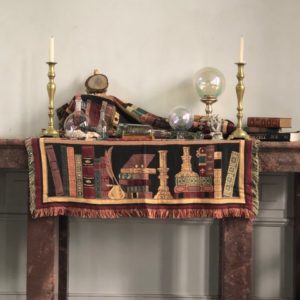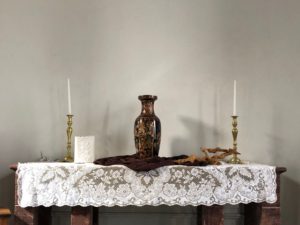Read the Order of Service.
January 17, 2016 – You’ve probably never heard the name Ephraim Nute. (But it is a pretty cool name, isn’t it?) You’ve also probably never heard about the 2011 book that Skinner House published about him: The Incredible Story of Ephraim Nute: Scandal, Bloodshed, and Unitarianism on the American Frontier. (And how’s that for a title?) I was on the Editorial Board of Skinner House when the manuscript for The Incredible Story was nearly passed over, and I was one of the people who argued – somewhat passionately, as I remember – that we simply had to publish this book.
Ephraim Nute was a Boston-born Unitarian, ordained to the ministry in 1845 at the age of 26. He served congregations in Massachusetts for about a decade before feeling the need for a new adventure. He followed that urge by volunteering to go to Kansas to start a new church there. The year was 1854, Kansas was still a territory, and it was the year that Congress passed the now infamous Kansas-Nebraska Act which said that as these territories were admitted as new states in the Union the settlers would decide for themselves whether or not to legalize slavery. As you may remember from a U.S. History class, these disputed territories were one of the matches that ignited the Civil War. In Kansas, in 1854, the struggle between anti-slavery activists and pro-slavery proponents was so fierce that this period is referred to as, “bleeding Kansas.” Starting a congregation in that context is the “adventure” Ephraim Nute signed on for. When he left, one of the gifts given to him to help with his new ministry was a revolver.
The story of “scandal, bloodshed, and Unitarianism on the American frontier” is a pretty exciting one. If anyone knows a screenwriter looking for a project, I’ll happily loan them my copy. It’s that amazing. An example: There’s a chapter in the book titled, “Bibles and Breechloaders.” When Nute would go back East to visit family, and friends, and the office of the American Unitarian Association, he would return with his wagon loaded with cases of books for his community. Only … the cases were actually filled with the Sharps breech loading rifles.
These were the rifles some called, “Beecher’s Bibles,” because of something the famous New England clergyman Henry Ward Beecher was reported to have said (and I’m quoting here from an 1856 article in the New Your Tribune):
“He (Henry W. Beecher) believed that the Sharps Rifle was a truly moral agency, and that there was more moral power in one of those instruments, so far as the slaveholders of Kansas were concerned, than in a hundred Bibles. You might just as well. . . read the Bible to Buffaloes as to those fellows who [support slavery]; but they have a supreme respect for the logic that is embodied in Sharp’s rifle.”
The Incredible Story of Ephraim Nute recounts his harrowing journeys with those crates of “books” in his wagon, as well as all of the times he was beaten, shot at, arrested, imprisoned, nearly lynched … All I can say is that the parish ministry has certainly changed some since then! That, and that there’s no question that this was a preacher who put his faith into action.
And he wasn’t alone. Among our Unitarian and Universalist ancestors are people who risked much in their support of the cause of abolition. In fact, at least one historian of religion suggests that one of the reasons we see such slow growth in Unitarianism in and around this period is because of the number of radical Unitarian preachers who were so public in their opposition to slavery. Not every one of our forebears would make us proud, of course – the President who signed the Fugitive Slave Act into law, Millard Fillmore, was a Unitarian, for instance. Yet in 1845, 170 Unitarian clergyman published an anti-slavery declaration in William Lloyd Garrison’s magazine The Liberator, and a list of some of the most active and well-known abolitionists would include quite a number of Unitarians and Universalists. And our ancestors were involved in less public ways as well:
- The belfry of our congregation in Olmsted, Ohio was a station on the Underground Railroad.
- Our congregation in West Roxbury, Massachusetts gave sanctuary in their building to several escaped slaves and Freedmen. Their Pastor, the Rev. Theodore Parker, kept a pistol in the pulpit, letting it be known that he would shoot anyone who tried to forcibly remove them. He kept a sword by his writing desk as well, because his home was a sanctuary also.
- Frances Ellen Watkins Harper was an African American woman who drew huge crowds of New Englanders to her lectures on the anti-slavery circuit. Some say she was the most popular of all the abolitionist speakers of her day. She was also a Unitarian.
- The Rev. Samuel Joseph May, who served our congregation in Syracuse, New York, was known to take up collections during the Sunday service explicitly for the purpose of aiding fugitive slaves. (He also encouraged the Free Blacks in his congregation to sit up front rather than in the segregated back. But that’s another story.)
- In Pennsylvania, our congregations in Meadville and Philadelphia, along with a seminary the Unitarians established in Meadville, were all known stations on the Underground Railroad, as were the Universalist congregations in Indiana County and Girard.
I could keep going, of course, but this could easily turn into a history lesson. (If it hasn’t already done so for some of you!) In my research I did come across a history paper written in 2002 for a course at Starr King School for the Ministry. It’s called, “Unitarian and Universalist Denominational and Individual Involvement in the Anti-Slavery Movement Prior to the U.S. Civil War.” Not quite as catchy as Scandal, Bloodshed and Unitarianism on the American Frontier, but it’s quite an interesting paper nonetheless (even though the author doesn’t even mention our dear Ephraim Nute even once!). [For those who are interested I’ve printed out some copies that you can find in the Church Office, and I’ll make sure that there’s a link to it when this sermon is published online.] As I said earlier, a list of those most active in the cause of abolition would include a number of Unitarians and Universalists.
This is true of the women’s suffrage movement as well. Judith Sargent Murray? One of ours. Elizabeth Cady Stanton? Susan B. Anthony? Yep. Them too. Jane Addams? Lucy Stone? Olympia Brown? Mary Rice Livermore? Julia Ward Howe? Yes, yes, yes, yes, and yes. In fact if you look at both the leaders and the rank and file of pretty much all of the movements for justice in U.S. history you’ll find Unitarians, Universalists, and Unitarian Universalists well represented. Resisting injustice is not something new for us; we’ve been at it for a long, long time.
That’s actually the reason I advocated for Skinner to publish Bobbie Groth’s book about her great-great-grandfather, Ephraim Nute. I saw it as providing proof, if proof were needed, that our modern movement’s strong anti-racism, anti-oppression emphasis is not new but has roots that go deep. I remember saying that the “incredible story of … scandal, bloodshed, and Unitarianism on the American frontier” offered an explanation of why we 21st century Unitarian Universalists see this work as so important. Simply – it’s part of the makeup of who we are; it’s part of the truth of who we’ve been.
Yet even though realizing that resisting injustice is part of our faith tradition’s genome may point toward an explanation of why we are engaged in such work today, I am not sure it says all that much about why we are, and have been, engaged in such resistance. We’ve been there, we’ve been doing it, but why have we been there doing it?
This week I stumbled upon a pretty cool resource, a rather long page on the website of our congregation in Albion, NY that contains … well … I lost count of how many pithy quotes from Unitarian Universalists it has. One that sprang out at me is by the Rev. Forrest Church,
“Unitarianism proclaims that we spring from a common source; Universalism, that we share a common destiny.”
This is part of the answer to that why. From their beginnings, the theologies of the movements that merged into us emphasized the unity of our human family and the universality of human experience. You know the saying, “until all of us are free, none of us is free”? That sense of interconnectedness, of mutual responsibility, has been a part of our theological understanding since the beginning.
Fundamentally, Unitarian Universalism is, and always has been, a humanist faith. By this I don’t mean that we are atheists at heart, although, of course, some of us are. Humanism has taken many forms – from a religious Christian humanism to a secular transhumanism. So, saying that a person, or a faith tradition, is “humanist” doesn’t really tell you all that much about their understanding of, “the sacred and the holy.” Well, actually, that’s not completely true. All forms of humanism stress that here – this place, this world, this universe, this “sphere of human experience,” if you will – is in-and-of-itself both sacred and holy, needing nothing out there to bless all that is right here. There’s a great line in a litany about what our faith does, and doesn’t, affirm – “it is more important to get heaven into people now, than to get people into heaven later.” Whatever may or may not come next, this world is where the action is. That’s humanism, and that’s foundational to our movement.
And it’s because our faith tradition teaches that “this world is where the action is” that we, as a people, have always been drawn to the work of resisting injustice. We look around us and see all the work there is to do. To paraphrase the words of the poet Adrienne Rich (that you can find in the back of our hymnal at #463):
[Our hearts are] moved by all [we] cannot save:so much has been destroyed
[we] have to cast [our] lot with thosewho age after age, perversely,with no extraordinary power
reconstitute the world.
So much has been destroyed – so much is being destroyed – and looking around ourselves we and our forebears have seen this and are compelled to act. And we are compelled to act because of one other aspect of our faith tradition’s teachings – that Love is our foundation, our “ground of being.”
So when we look around us at all that we cannot save, all that has been destroyed and is being destroyed, we do so through eyes of Love and we are compelled by Love to do something. We are compelled to resist the injustices we see – it’s what we’ve always done and what we’re doing now, and what I fully expect Unitarian Universalists will keep doing as long as we last.
Now … there are those who say that every sermon should end on an uplifting note, or a charge to action, or, as Arthur likes to put it, a “so what?”. I guess I’d have to say that this sermon is going to end on an “I thought you ought to know.” I thought you ought to know that our Unitarian Universalist tradition has a long and storied history, an incredible story of a people who can inspire and make us proud. I thought you ought to know that we are part of something, friends, that’s larger than any of us, larger even than TJMC. This community is part of something larger than itself – a community that stretches far into the past and will extend far into the future. And that community has always been on the frontlines, always been resisting injustice, always been striving to create a world of freedom and justice for everyone without exception. We are a part of that. We are a part of that.
Hear Bob Gross talk about the AATF.
Hear Mike’s reflection.
Read the text of Mike’s reflection.


